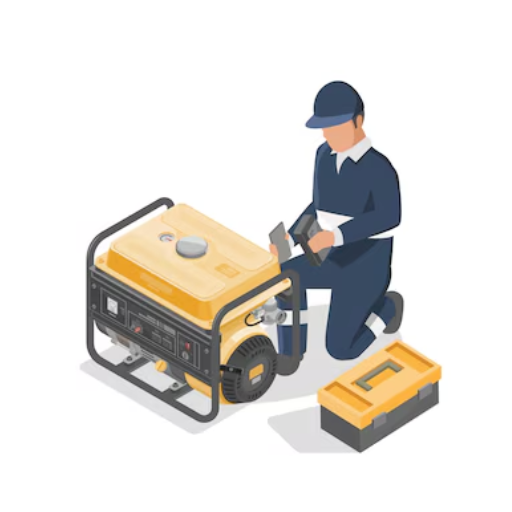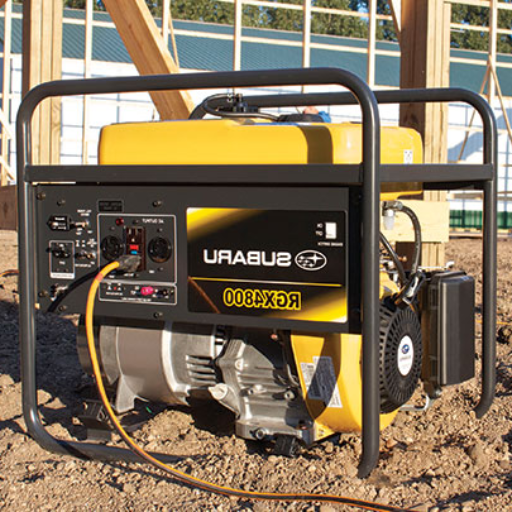Electric generators serve as silent workhorses for residences, commercial enterprises, and industrial setups that require consistent power availability during a blackout or when operating in an off-grid environment. Like any critical piece of equipment, these machines need to be regularly serviced to work optimally and mitigate disruptions that can bring about expensive consequences. Whether you use the generator for occasional emergency backup or as an indispensable element of the daily routine, knowing how to maintain it is crucial.
This guide aims to provide you actionable tips, comprehensive checklists, and professional insights for hassle-free maintenance of your generator so that it operates efficiently for years. We will take you through all the necessary steps, from routine inspections to diagnosing and solving common problems, to help enhance the performance and durability of your generator. Maintain proactive strategies to minimize time, money, and unpleasant surprises.
What is Generator Maintenance and Why is it Important?

Proper generator maintenance implies taking appropriate measures that involves frequent checking, servicing, and taking care of a generator and ensures that it functions efficiently and dependably. It includes activities like checking the oil level, cleaning or replacing air filters, performing battery checks, and examining the fuel system components. Preventive measures comes in the form of maintenance, maintenance ensures that generators do not break down unexpectedly, aids prolong the lifespan of generators, and makes sure it works optimally during very important situations. Being negligent can lead to unnecessary and expensive repairs as well as great losses when generators fail when needed most.
Understanding the Importance of Regular Maintenance
Generators, like any other piece of machinery, require regular upkeep in order to function properly. A study by the U.S. Department of Energy found that poorly maintained equipment uses 10-20% more energy than necessary due to lack of efficiency. Having a schedule for maintenance permits organizations to vastly decrease operational expenses and energy waste. As stated by the EPA, replacing dirty air filters can improve efficiency by upwards of 15%.
Moreover, maintenance boosts dependability during critical situations. Cummins, a power generation company, reported that greater than 50% of generator failures during emergency situations are the result of lack of routine upkeep. Checking vital components like batteries, oil, fuel, and coolant on a regular basis helps to prevent these failures.
Considering a financial perspective, the cost of preventative maintenance is always lower than repairing or replacing equipment after a breakdown. The National Institute of Standards and Technology (NIST) indicates that corrective maintenance can cost 3-4 times more than planned maintenance. Regular upkeep of equipment not only extends their productivity lifespan, but also minimizes unnecessary downtimes, ensuring dependability when needed most.
These revelations illustrate vividly how maintaining a generator is not only about its operational state but also their economical value, energy savings, and lack of worries from such interruptions.
How Generator Maintenance Prevents Power Outage
Proper generator maintenance plays a pivotal role in ensuring that a power outage does not disrupt generator functionality while takingenhanced measures to mitigate issues down the line. Five ways generator maintenance eliminates potential power outages include:
- Identifying Issues Early
In-depth periodic inspections can pinpoint any critical damage on belts, bearings, and connections. These inspections aid in addressing and attending to any precursors that could potentially lead to breakdowns while the machine is in operation.
- Integrity Of Fuel System
Inadequate maintenance can lead to the clogging of fuel systems with sediment over time. Routine maintenance tasks such as filter replacements, fuel polishing, etc., aid in ensuring that dirt free fuel is available for use in engines, lessening the chance of the engine stalling midway.
- Reliability Of Battery Packs
Weak or dead batteries rank highly as generator startup failures. Routine checks and tests on the voltage of the battery along with its connecting terminals ensure that any potential emergency is attended to without hiccups.
- Performance Of Lubrication System
Ensuring that sufficient amounts of coolant are present in conjunction with tempered oil manages overheating and mechanical malfunctions. This takes place under regulated levels of constant demand on the generator.
- Load Tests To Check Readiness
The load test is conducted to check whether the generator incorporates all of the parts and components operating at full power. Conducting this test on a regular basis guarantees that the generator can support critical systems during outages.
After solving these issues, general maintenance of the generators reduces the possibility of unforeseen outages and confirms that backup power will always be available when it is needed.
Common Generator Maintenance Tasks to Perform
| Frequency | Task | Details |
|---|---|---|
|
Daily |
Check fuel levels |
Ensure adequate fuel for operation. |
|
|
Inspect for leaks |
Look for oil, fuel, or coolant leaks. |
|
|
Listen for unusual noises |
Identify mechanical issues early. |
|
|
Verify control panel indicators |
Ensure normal operation. |
|
Weekly |
Run generator under load |
Test functionality for 30 minutes. |
|
|
Check fluid levels |
Top off oil and coolant as needed. |
|
|
Inspect air filters |
Clean or replace if dirty. |
|
|
Test automatic startup |
Confirm readiness for emergencies. |
|
Monthly |
Replace oil and oil filter |
Follow manufacturer recommendations. |
|
|
Inspect battery and cables |
Clean terminals and check electrolyte levels. |
|
|
Conduct load testing |
Ensure generator handles peak demand. |
|
|
Check coolant system |
Inspect hoses and coolant levels. |
|
Annually |
Change spark plugs |
Maintain efficient ignition. |
|
|
Inspect electrical system |
Check wiring and alternator. |
|
|
Flush cooling system |
Prevent overheating and wear. |
|
|
Perform full load test |
Verify generator’s maximum capacity. |
|
|
Schedule professional inspection |
Ensure comprehensive diagnostics. |
How Often Should You Service Your Generator?

To achieve the best results, it is ideal to perform maintenance on your generator annually. However, for generators that are run frequently or are involved in critical operations, servicing once every six months is preferred. General maintenance of the generator for run verification includes testing the battery, running the engine, checking the fuel system, oil levels, and filter levels. As always, follow the manufacturer’s instruction for maintenance checks and their required intervals.
Creating a Generator Maintenance Schedule
Servicing the generator should be done according to the recommendations of the manufacturer, how often the generator is used, and the environmental conditions it’s exposed to. In most scenarios, frequent users should perform biannual checks while users that run the generator only rarely should service it annually.
Factors Influencing Maintenance Frequency
When a generator is properly maintained it ensures long optimal functionality. However, certain factors impact the frequency of generator maintenance, which include.
- Fuel Type
The fuel used greatly determines the maintenance requirements needed. For example, diesel, propane, and natural gas generators have varying needs. Diesel generators require more maintenance over time due to soot and debris buildup. This also means diesel models require inspections and cleaning of fuel injectors far more than propane or natural gas models.
- Common Operating Conditions
Whether it is extreme temperatures, humidity, and dust, all serve as a basis for whether a generator requires additional servicing. Generators working in humid regions have an increased risk of corrosion while working in dusty areas increases the likelihood of clogging, requiring constant upkeep with air filters.
- Business or Industrial Use
Generators in commercial settings require frequent checkups far more than those used at home. For instance, a generator exceeding 500 hours of use in a year requires servicing, usually needing oil and filter changes after 200-250 hours of use, according to most manufacturer’s recommendations.
- Age and Condition of the Generator
Unlike new models, older generators seem to be more troublesome. Each and every older unit’s maintenance routine has to check some components like belts and seals, as they may have ‘aged’ and require regular inspections.
- Power Load
Wear and tear increases if a generator is almost always operated near its capacity, and in that case, services will be required more frequently. For generators running continuously at 80-100% power, servicing might be due after just 150 hours of operation.
Maintenance routines such as these serve to optimize the generator’s reliability and overall lifespan. This strategy helps eliminate the chances of costly repairs and sudden breakdowns. Check the manufacturer’s manual so that compliance with the most recent recommendations is guaranteed.
Signs Your Generator Needs Immediate Attention
If I detect any peculiar sounds paired with excessive smoke or difficulty getting the generator to start, chances are it requires immediate attention to it. Additionally, strong scents of fuel accompanied by persistent lights of warning suggest that something is amiss. Reacting to these warning in time can minimize potential damaging and also ensure the generator runs in a safe manner efficiently.
What Are the Key Maintenance Tasks for a Portable Generator?

| Task | Details |
|---|---|
|
Oil Changes |
Replace oil every 50-100 hours or 6 months. |
|
Air Filter Maintenance |
Clean or replace every 50-100 hours. |
|
Spark Plug Maintenance |
Inspect, clean, or replace annually. |
|
Fuel System Check |
Inspect for leaks and ensure clean fuel. |
|
Battery Inspection |
Check connections and replace every 2-3 years. |
|
Periodic Startups |
Run generator periodically to ensure readiness. |
|
General Cleaning |
Clean exterior and accessible parts regularly. |
|
Cooling System Check |
Inspect coolant levels and radiator. |
|
Exhaust System Check |
Inspect for leaks or damage. |
|
Load Testing |
Test under load to ensure performance. |
Inspecting the Air Filter and Spark Plug
To keep your portable generator in good working condition, you should regularly check the air filter and spark plug. Make certain that the air filter provides airflow by examining it for dirt and cleaning or replacing it as needed. Check the spark plug for damage or residue; if it looks gunky or worn out, replace it. Maintaining these small details helps with fuel efficiency and engine performance. Always consult the user’s manual for details on inspection and replacement for your specific model.
Steps for a Regular Oil Change
| Step | Details |
|---|---|
|
1. Warm Up Oil |
Run generator for 5 minutes to heat oil. |
|
2. Disconnect Spark Plug |
Prevent accidental starts during maintenance. |
|
3. Clean Drain Area |
Wipe around oil fill and drain plug. |
|
4. Drain Old Oil |
Tilt generator and drain into a container. |
|
5. Replace Oil Filter |
Install a new filter, lubricate gasket. |
|
6. Add New Oil |
Use funnel, fill to recommended level. |
|
7. Reconnect Spark Plug |
Reattach spark wire and secure cover. |
|
8. Dispose of Oil |
Follow local regulations for oil disposal. |
How to Add a Fuel Stabilizer for Longevity
The use of a fuel stabilizer within the fuel system is critical for the upkeep of your generator, especially when it is stored away or not used frequently. Fuel stabilizers help in preventing the breakdown of the fuel and stop fuel clogs, increased corrosion within the system, and decreased efficiency of the engine. With that being said, we have laid out some precautions on the use of fuel stabilizers.
- Pick the Correct Stabilizer
Always go for the best and most trusted fuel stabilizer that goes hand in hand with the fuel your generator uses, whether that be gasoline or diesel. A good number of reputable brands sell stabilizers that are made for small engines and generators. Always check the description. For instance, with gasoline, one ounce concentration per 2.5 gallons is a standard stabilizer ratio, however, each manufacturer has their own tips.
- Inspect the Fuel Tank
The first step to using the stabilizer is ensuring the fuel tank has clean fuel in it. Old or outdated fuel should be removed since the stabilizer can’t undo fuel deterioration. Fuel like gasoline is known to go bad and cause problems, so a intact fuel tank is vital to avoid running into issues down the line.
- Measure The Right Amount
Follow the ratio that is given to you in the instructions for each labeled stabilizer. For instance, one of the industry leaders ‘Stabil’ often suggests using approximately one ounce of the stabilizer for every gallon of the fuel; however, this value is subject to change so make sure to always check the label.
- Add the Stabilizer and Mix
Proceed to add the appropriate amount of stabilizer to be used into the fuel tank. After adding the stabilizer, you need to start the generator for about five to ten minutes. In doing so, you ensure the fuel gets properly stabilized and circulates through the entire system along with the carburetor, which helps prevent varnish and other deposits.
- Store Properly
When you intend to store the generator for long periods, keeping the fuel tank as full as possible is recommended to avoid air contact that would accelerate moisture and oxidation. Gasoline that has been treated can remain effective for up to 12 months, and longer if premium stabilizers are used.
Additional Considerations
- Stabilizers do not guarantee complete separation or odorless indication of disengagement, meaning that fuel should also be checked regularly for color separation, discoloration, or unusual smell.
- For generators not designed for ethanol-based fuel, ethanol is known to moisture which broadens the fuel stablizer’s capability, meaning it is not advisable to mix stablizers with ethanol-lended fuel.
- Always check the restraining guide to ensure that the usage of stabilizer does not go against the recommendation of the manufacturer.
Incorporating a fuel stabilizer into your regular upkeep can help prolong the life of your generator so that it performs properly when you need it the most.
How to Maximize the Life of Your Standby Generator

| Key Task | Details |
|---|---|
|
Follow Manufacturer Guidelines |
Adhere to recommended maintenance and usage. |
|
Perform Preventative Maintenance |
Schedule regular inspections and fluid checks. |
|
Use High-Quality Fluids |
Opt for premium oil, fuel, and coolant. |
|
Check Oil Regularly |
Monitor levels and replace when dirty. |
|
Avoid Wet Stacking |
Run at proper load to prevent fuel buildup. |
|
Winterize the Generator |
Protect against cold weather damage. |
|
Store in Proper Location |
Keep in clean, dry, and ventilated areas. |
|
Conduct Load Bank Testing |
Test efficiency and prevent carbon buildup. |
|
Repair Issues Promptly |
Fix problems early to avoid major failures. |
|
Run Regularly |
Operate monthly to prevent moisture buildup. |
Routine Checks for Your Standby Generator
| Frequency | Task | Details |
|---|---|---|
|
Daily |
Check for oil leaks |
Inspect for spills around the generator. |
|
|
Inspect for warning lights |
Address alarms or indicators immediately. |
|
|
Look for pest intrusion |
Check for droppings or chew marks. |
|
Weekly |
Run generator in auto mode |
Ensure automatic startup works. |
|
|
Inspect exhaust system |
Check for leaks or overheating. |
|
|
Check fluid levels |
Verify oil and coolant levels. |
|
Monthly |
Clean battery terminals |
Remove dirt and corrosion with a soft brush. |
|
|
Inspect coolant concentration |
Maintain a 1:1 antifreeze-to-water ratio. |
|
|
Perform load testing |
Confirm generator operates under load. |
|
Annually |
Change oil and filters |
Replace oil and air filters. |
|
|
Inspect electrical system |
Check wiring and connections. |
|
|
Perform load bank testing |
Test generator’s full capacity. |
|
|
Clean the generator |
Remove dirt and debris from the unit. |
Understanding the Role of an Electrician
Electricians have a big responsibility in the maintenance and repair of electrical systems, especially with regard to standby generators. Electricians work on standby generators to check for proper installation, confirm the electrical connections, and integrate the generator with the building’s system. This step is important to make certain that the generator will supply power during outages without straining, overloading circuits, or causing dangerous situations.
The U.S. Bureau of Labor Statistics reported there are around 730,000 electricians in the United States as of 2022, and more continue to pour in as our society becomes more dependent on having electricity and advanced electrical systems in place. An electrician is required to be licensed to meet certain local codes, safety mandates and regulations which is important when you want to connect a generator to your electrical system.
Electricians are also responsible for routine maintenance on standby generators such as checking transfer switches, functionality tests, and dealing with the wiring for the systems. With the expertise that they have, most issues that could arise are pointed out early on which reduces their chances of costly repairs, and hazards such as inexpensive combustible materials becoming dangerous and malfunctioning systems. The electrician also has to make sure that the generator is capable of meeting the power demands of the house or business, so he has to know the basic electrical load requirements for the business or house.
When an electrician is hired to install a standby generator, make sure that all safety protocols are observed, efficiency is maximized, and that all relevant standards are met.
Preventing Corrosion and Ensuring Stability
Preventive maintenance of your standby generator is crucial to avoid deterioration or corrosion if you want to preserve its longevity and usefulness. Here are five practices we think can aid you in preserving your generator:
- Regular Cleaning
Dirt and moisture always accumulate over time. Regularly draining the moisture around the unit will eradicate any debris while also maintaining the condition of the generator’s exterior.
- Protective Coating
Application of protective anti-corrosive coats on metal components of the generator will significantly improve its efficacy by averting rust and degradation. This painting technique is especially useful in humid or coastal regions.
- Battery Maintenance
Cleaning and checking the terminals of the battery will prevent the formation of insoluble compounds which are also known as corrosion. A non-functioning generator will lead to unreliable service and even total failure when terminals are corroded and left unchecked.
- Check for Moisture Intrusion
Make sure water cannot penetrate the generator housing through proper sealing. The presence of moisture is damaging and hazardous as it is known to destroy sensitive electrical components while also worsening deterioration.
- Routine Inspections by Professionals
Get in touch with a trained technician to get corroded parts checked or other indicators of instability. Early signs can be dealt with, but they need corrective measures to be taken so long-term problems do not arise.
These tips will enhance the stability and efficacy of your generator while also preventing steep drops in performance in the coming years.
What Should You Include in Your Generator Maintenance Checklist?

| Task | Details |
|---|---|
|
Visual Inspections |
Check for leaks, debris, and physical damage. |
|
Fluid Level Checks |
Monitor oil, coolant, and fuel levels. |
|
Battery Testing |
Inspect voltage, connections, and charge. |
|
Filter Replacements |
Replace air, fuel, and oil filters regularly. |
|
Load Bank Testing |
Test generator under load for performance. |
|
Inspect Electrical System |
Check wiring, connections, and circuit breaker. |
|
Run Generator Regularly |
Operate to prevent moisture and ensure readiness. |
|
Coolant System Check |
Inspect coolant concentration and lines. |
|
Clean Surrounding Area |
Remove dirt, debris, and pests. |
|
Professional Inspections |
Schedule annual checks by certified technicians. |
Essential Items for Effective Maintenance
As I ensure my generator is in proper working order, I follow a checklist that includes a few critical tasks. I check the oil level and remove any contaminants, so the engine runs smoothly. I examine the air filter, ensuring proper airflow into the system. Fresh petrol is a must, along with adequate upkeep of the fuel lines to avoid blockages. The battery terminals often suffer from corrosion, so I check them along with the charge. Most importantly, I monitor the general condition of the generator for signs of wear and tear or any unusual sounds coming from the machine while it is running. This is my approach to maximizing the working reliability of my generator.
Adapting the Checklist for Backup Generators
| Task | Details |
|---|---|
|
Create Equipment List |
Include generator, ATS, and distribution panels. |
|
Inspect Battery |
Check charger, life, and connections. |
|
Perform Load Bank Test |
Test generator under load for performance. |
|
Check Fuel System |
Inspect fuel level, quality, and lines. |
|
Replace Filters |
Change air, fuel, and coolant filters. |
|
Monitor Fluids |
Check oil, coolant, and fuel levels. |
|
Test ATS |
Verify automatic transfer switch operation. |
|
Inspect Coolant Heater |
Ensure proper function for cold starts. |
|
Document Maintenance |
Log all tasks, tests, and findings. |
|
Schedule Professional Inspections |
Annual checks by certified technicians. |
References
-
Getting serious about safety and loss prevention emergency power and standby generators – A resource from Texas A&M University discussing generator inspections and maintenance.
-
ELECTRICAL POWER SYSTEMS – A technical guide from the University of Michigan focusing on generator systems and maintenance considerations.
-
BUILDOUT AND UPGRADE OF CENTRAL EMERGENCY GENERATOR SYSTEM – A document from the U.S. Department of Energy providing insights into generator installation and maintenance.
Frequently Asked Questions (FAQ)
Q: How often should I perform maintenance on my home generator?
A: Routine maintenance should be performed according to the manufacturer’s guidelines, typically every 6 to 12 months, to ensure your generator remains well-maintained and ready to provide power.
Q: What steps are included in a generator maintenance service?
A: A comprehensive generator maintenance service includes changing the oil, checking and replacing filters, inspecting the control panel, testing the battery, and performing a visual inspection to identify potential issues.
Q: How can I extend the life of your generator?
A: To extend the life of your generator, regularly perform maintenance, keep the area around the generator clean, and use quality fuel. Additionally, ensure proper installation and operation according to the manufacturer’s guidelines.
Q: Why is it essential to change the oil in my generator?
A: Changing the oil is crucial for keeping your generator running smoothly. It helps lubricate the engine, reduces wear, and prevents overheating, ultimately prolonging the generator’s lifespan.
Q: What safety precautions should I take when operating a power generator?
A: Always run the generator in a well-ventilated area to prevent carbon monoxide buildup, keep it dry, and avoid overloading it. Follow the manufacturer’s instructions and perform routine maintenance to ensure safe operation.
Q: How do I ensure my backup power is reliable during an outage?
A: To ensure reliable backup power, regularly test your generator, perform maintenance tasks like checking oil levels and fuel quality, and follow the generator manufacturer’s guidelines for operation and care.
Q: What should I do if my generator requires repairs?
A: If your generator requires repairs, contact us or a certified technician to diagnose and fix the issue. Avoid attempting repairs yourself to prevent further damage or safety hazards.
Q: How can I prevent the generator from starting issues?
A: Regularly inspect and maintain the generator, check the battery and fuel system, and ensure the control panel functions correctly. Routine maintenance can help prevent the generator from starting issues.
Q: Is it necessary to read the manual before using my generator?
A: Reading the manual is essential to understand your generator’s specific operational and maintenance requirements. It ensures you use the generator safely and effectively, avoiding potential damage or hazards.
Q: What factors should I consider when purchasing used generators?
A: When buying used generators, consider the generator’s age, maintenance history, hours of operation, and condition. Ensure it has been well-maintained and tested for reliable performance before purchasing.







